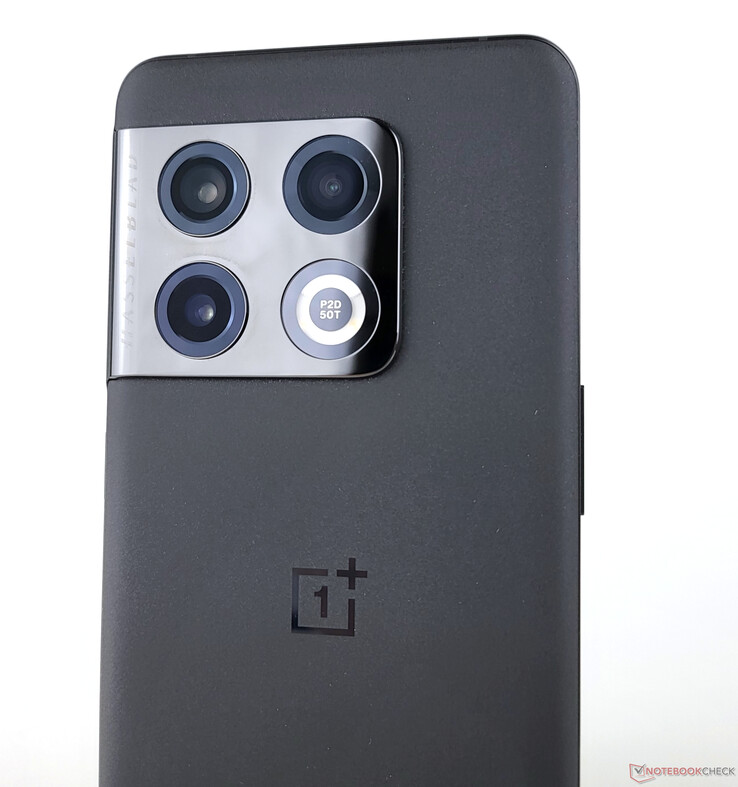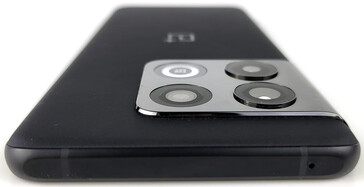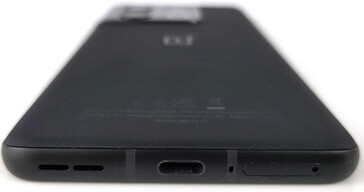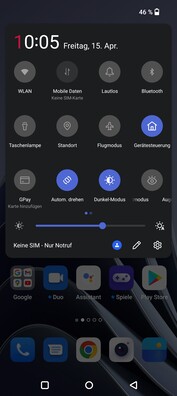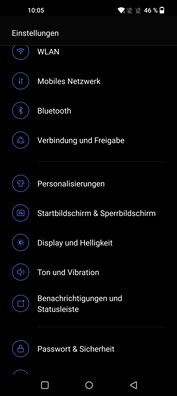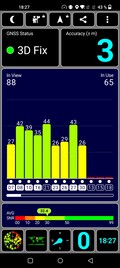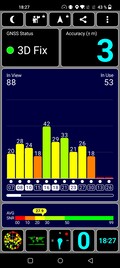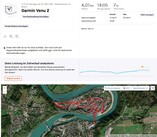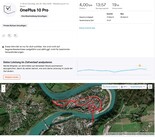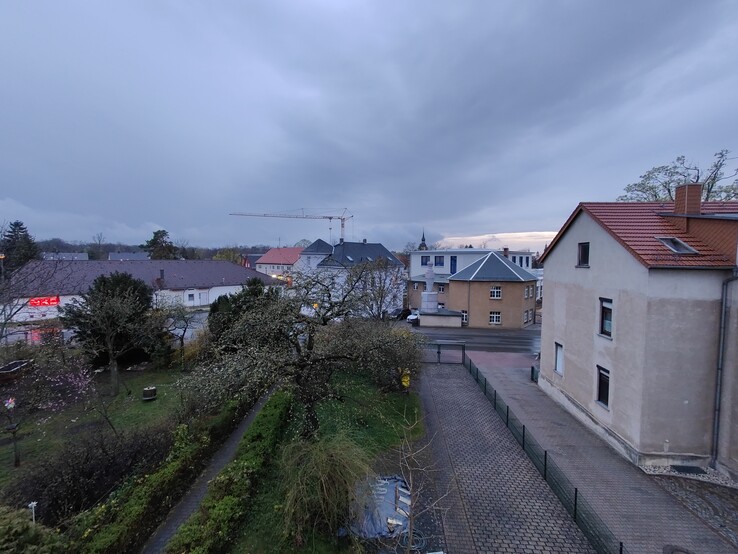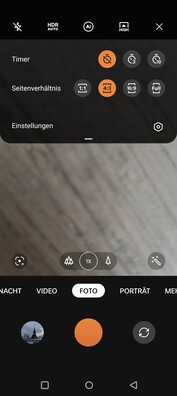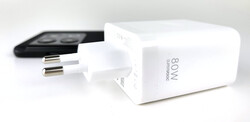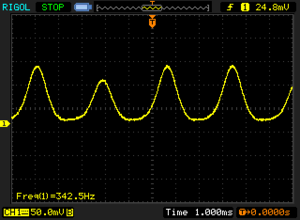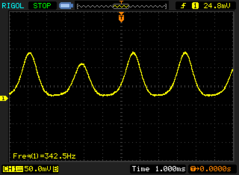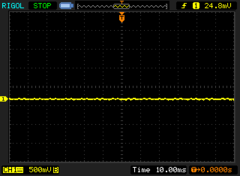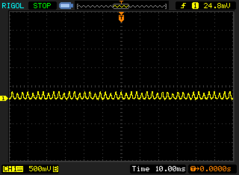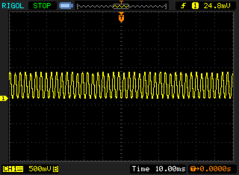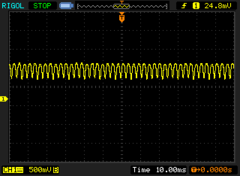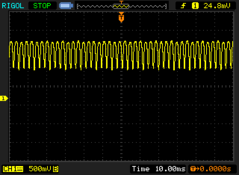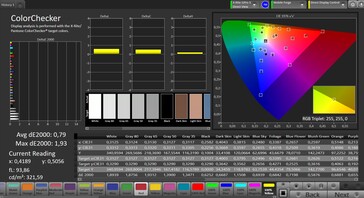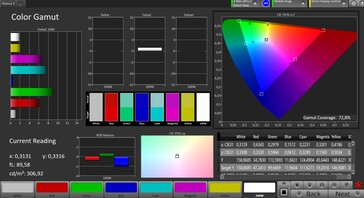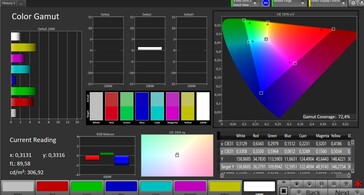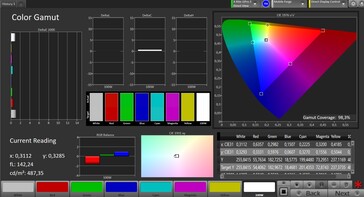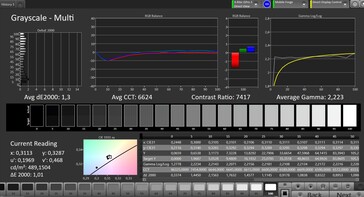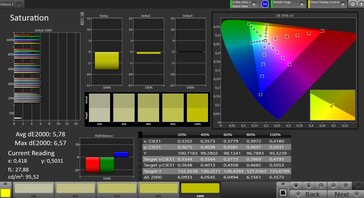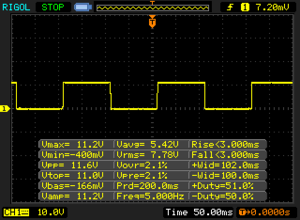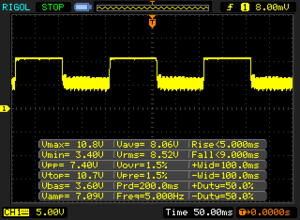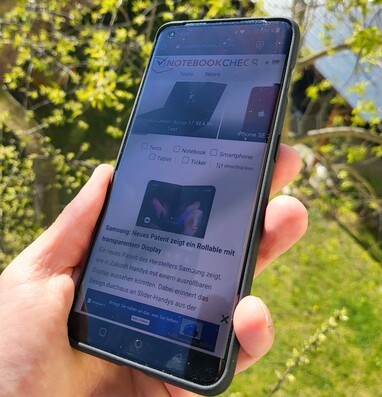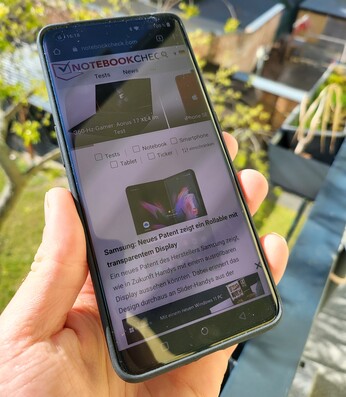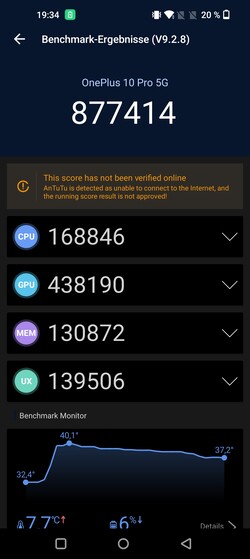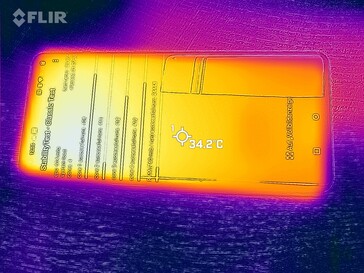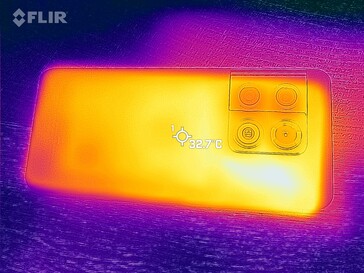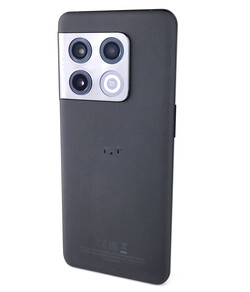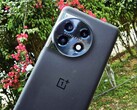OnePlus 10 Pro Review - Successful Flagship Smartphone with Questionable Adjustments
After the OnePlus 10 Pro was unveiled in China in January of this year, the Chinese-made flagship has now also made its way to Europe. As with the OnePlus 9 Pro, one of the highlights is likely to be the triple camera with second-generation Hasselblad tech. The camera specialists from Sweden have once again optimized the three cameras this year, which should ensure authentic colors. However, this project only worked to a limited extent with the predecessor.
Like other current high-end smartphones, the 10 Pro uses a Qualcomm Snapdragon 8 Gen 1 and a 120 Hz fast LTPO 2.0 AMOLED display, which measures 6.7 inches diagonally and has a resolution of 3,216 x 1,440 pixels.
Depending on the variant, the OnePlus smartphone comes with either 8 GB of LPDDR5 RAM and 128 GB of UFS 3.1 storage, or with 12 GB RAM and 256 GB of storage. The features of the OnePlus 10 Pro are rounded off by a 5,000 mAh battery, which can be charged quickly with up to 80 watts via SuperVOOC and up to 50 watts wirelessly via AirVOOC.
Possible Competitors in Comparision
Rating | Date | Model | Weight | Drive | Size | Resolution | Price |
|---|---|---|---|---|---|---|---|
| 88.1 % v7 (old) | 06 / 2022 | OnePlus 10 Pro SD 8 Gen 1, Adreno 730 | 200.5 g | 256 GB UFS 3.1 Flash | 6.70" | 3216x1440 | |
| 88.6 % v7 (old) | 06 / 2022 | OnePlus 9 Pro SD 888 5G, Adreno 660 | 197 g | 256 GB UFS 3.1 Flash | 6.70" | 3216x1440 | |
| 89.2 % v7 (old) | 04 / 2022 | Oppo Find X5 Pro SD 8 Gen 1, Adreno 730 | 221 g | 256 GB UFS 3.1 Flash | 6.70" | 3216x1440 | |
| 87.6 % v7 (old) | 02 / 2022 | Xiaomi 12 Pro SD 8 Gen 1, Adreno 730 | 204 g | 256 GB UFS 3.1 Flash | 6.73" | 3200x1440 | |
| 89.4 % v7 (old) | 03 / 2022 | Samsung Galaxy S22 Ultra 5G Exynos 2200, Xclipse 920 | 228 g | 128 GB UFS 3.1 Flash | 6.80" | 3088x1440 |
Case - OnePlus smartphone available in two colours
The design of the OnePlus 10 Pro is characterized in particular by the newly designed ceramic cover of the rear cameras with 3D nano microcrystals. According to the manufacturer, this makes the surface particularly hard and resistant. In terms of colors, not much has changed compared to the OnePlus 9 Pro. With "Volcanic Black" and "Emerald Forest", there is once again a black and green variant to choose from. Both color options have a matte finish which we find very visually appealing. Fingerprints are hardly visible due to the matte finish of the Gorilla Glass 5 surface.
The build quality and feel are at a very high level. The slightly curved glass edges on the back feel pleasant in the hands. In contrast to the predecessor, the manufacturer does away with an IP certification for the current flagship smartphone, so there is no official protection against dust, splash water or rain. As with the OnePlus 9, the 10 Pro is sealed (according to OnePlus Germany), so contact with water should (theoretically) not be a problem.
The 2.5D Gorilla Glass Victus on the front curves slightly over the edges, which makes for quite thin edges on the top and bottom of the 6.7-inch display. The display surface ratio is a good 90 percent. The typical alert slider of the Chinese manufacturer is located on the right side of the case, which can be used to quickly switch between sound settings.
Hardware - OnePlus smartphone with UFS storage
The OnePlus 10 Pro's hardware features include wireless image transfer of screen content (Miracast) as well as USB OTG for quick connection of external accessories. A USB Type-C port that supports the USB 3.1 standard is available for wired data transfer.
The internal UFS storage of our test device has a capacity of 256 GB. Minus the Android system and the preinstalled apps, the available capacity is only 224 GB upon delivery. Expanding the OnePlus phone's memory using microSD cards is not possible.
Software - OnePlus 10 Pro with Android 12
The operating system is Google's Android version 12 with security patches as of March 2022. The "Day One Patch" for market launch (V12.1) has already been applied to our test device.
Everything initially appears to have more or less remained the same, but the Chinese are breaking new ground with the current Oxygen OS 12 system interface. BBK Electronics is merging the operating systems of its Oppo and OnePlus brands so that the user interfaces build upon a uniform code base called Unified OS.
The OnePlus 10 Pro's in-house user interface features an improved Dark Mode with three customizable levels, revamped icon symbols with improved textures, and new layouts in the Gallery app.
Communication and GNSS - OnePlus smartphone with WiFi 6
In terms of communication, OnePlus uses Bluetooth 5.2, dual-SIM, 5G and NFC for contactless payment. The 10 Pro performs very well in regard to WLAN thanks to WiFi 6 and multi-user MIMO, which ensures high transfer rates in the home network. However, other current flagships, such as the Xiaomi 12 Pro, perform even better than the OnePlus smartphone in our Wi-Fi test.
In combination with our Asus ROG Rapture GT-AXE11000 reference router, the 10 Pro is very consistent in terms of transfer rates, but use of the 6 GHz band (WiFi 6E) was not possible.
Thanks to the integrated Qualcomm X65 modem, the flagship smartphone can (theoretically) download at speeds of up to 10 Gbit/s via mobile internet. In addition to the 5G standard, the OnePlus 10 Pro also supports access to a total of 26 LTE bands. We can thus confirm an attractive frequency coverage for the German-speaking region, but the smartphone is also suitable for trips abroad.
| Networking | |
| iperf3 transmit AX12 | |
| OnePlus 9 Pro | |
| iperf3 receive AX12 | |
| OnePlus 9 Pro | |
| iperf3 receive AXE11000 | |
| Xiaomi 12 Pro | |
| OnePlus 10 Pro | |
| Oppo Find X5 Pro | |
| Average of class Smartphone (52 - 1721, n=177, last 2 years) | |
| Samsung Galaxy S22 Ultra 5G | |
| iperf3 transmit AXE11000 | |
| Xiaomi 12 Pro | |
| OnePlus 10 Pro | |
| Oppo Find X5 Pro | |
| Average of class Smartphone (49.8 - 1828, n=177, last 2 years) | |
| Samsung Galaxy S22 Ultra 5G | |
For localization, the OnePlus smartphone uses satellite systems ranging from GPS (L1+L5), Glonass, Galileo (E1+E5) to BeiDou as well as SBAS. The phone is quick to detect satellite signals and does so accurately both outdoors and indoors.
During a short test drive, the flagship smartphone was tested against the Garmin Venu 2 smartwatch. The OnePlus 10 Pro tracks the route very accurately and only occasionally shows minimal deviations. At the end of the 4 km route, there were only 10 meters of difference between the smartwatch and the OnePlus smartphone. So nothing stands in the way of using it for navigation tasks.
Phone Functions and Voice Quality - OnePlus 10 Pro with Dual SIM
Unfortunately, the high-end smartphone from OnePlus does not support eSIM. Only the two physical SIM card slots can be used. On the other hand, functions such as WLAN calling and VoLTE are supported.
We like the voice quality of the OnePlus 10 Pro. Whether held to the ear or via loudspeaker: there were no points of criticism. During "normal" calls, the conversation partner sounds quite natural and the user's voice is also conveyed very clearly. In hands-free mode, which we also checked using video telephony, some reverberation and distortions come into play. But good intelligibility is always given.
Cameras - OnePlus smartphone with triple cam
In the upper left corner, OnePlus makes use of a 32 MP front camera with Sony IMX615 sensor. In well-lit conditions, the 10 Pro takes very nice selfies. Surprisingly, however, there is no UHD option for video. Unlike the OnePlus 9 Pro, this flagship generation has to make do with 1080p.
The 48-megapixel main camera of the triple cam is still based on the 1/1.43-inch Sony IMX789 sensor of the predecessor. The 7P lens offers an aperture of f/1.8 as well as optical image stabilization and an equivalent focal length of 23 mm. The results of the main camera are rich in detail and the dynamic range in the shots is high. Overall, the OnePlus 10 Pro over-sharpens the subjects too much for our taste and the exposure doesn't always fit in bright areas of the image either. In very low light, the strength of the rather large sensor and OIS comes into play. The OnePlus phone captures a lot of image information despite the darkness, and the illumination is also very appealing. However, the sharpness could be better.
For improved color reproduction, the Chinese have once again collaborated with Swedish camera brand Hasselblad. Colors are captured naturally without the subjects appearing too pale. However, the color fidelity we measured is neither particularly good nor particularly bad - as with the predecessor, mediocrity prevails here. There is great potential for improvement, especially with bright green tones and greyscales.
While the OnePlus 9 Pro has an IMX766-based wide-angle camera with a comparatively large image sensor (1/1.56 inches), the OnePlus 10 Pro is equipped with a Samsung JN1 sensor, which has a sensor size of 1/2.76 inches and very small 0.64 micron pixels. Especially in low light, this is a step backwards in terms of photo quality. But even during the day, the level of sharpness is visibly worse than that of the OnePlus 9 Pro. On the other hand, the 10 Pro now has a special mode that allows for significantly wider-angle shots with an image area of 150 degrees.
The telephoto camera offers a resolution of 8 MP, a 3.3x zoom without any loss in quality, and OIS. The well-known OmniVision OV08A19 sensor delivers decent results, but even at fivefold magnification, subjects sometimes appear artificial. Thanks to the optical image stabilizer, relatively sharp shots can be taken even at 10x or 20x magnification.
All three lenses enable the capture of 12-bit RAW images and 10-bit video. New features include RAW+ mode, which has a larger dynamic range and better noise reduction, and a manual video mode. Moving images can again be recorded in 8K resolution at 24 fps or in 4K at 120 fps. Switching between lenses while a video recording is in progress is possible. However, the color temperatures between the main and wide-angle cameras are poorly matched.
Image comparison
Choose a scene and navigate within the first image. One click changes the position on touchscreens. One click on the zoomed-in image opens the original in a new window. The first image shows the scaled photograph of the test device.
HauptkameraHauptkameraLow LightWeitwinkel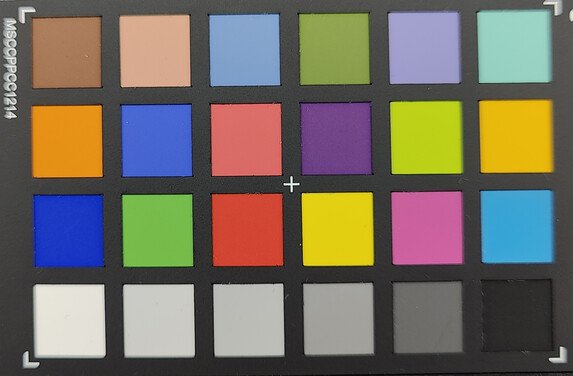
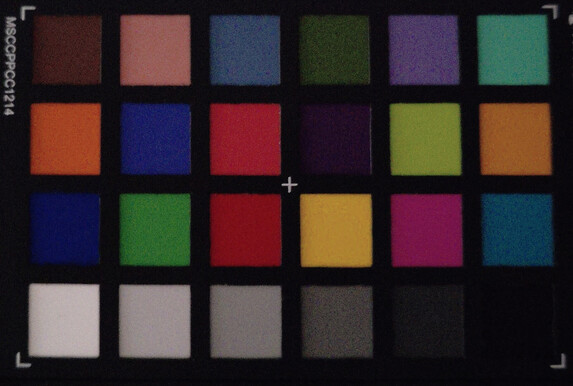
Accessories and Warranty - OnePlus 10 Pro with power charger
The OnePlus 10 Pro comes with an 80-watt modular power charger, a data (or charging) cable, a protective cover and a SIM pin, as well as a quick guide and warranty policy. However, USB 3.1 functionality requires a separate data cable that supports the standard. A USB 2.0 data cable is included in the delivery box.
OnePlus offers other accessories for the flagship smartphone in its web shop, including headphones and protective cases. A 24-month warranty is provided to those making their purchase in Germany.
Input Devices & Operation - OnePlus cell phone with 1,000 Hz
The fingerprint sensor under the OLED display reacts quickly and often detects the finger accurately. Although the optical sensor is not based on ultrasonic technology, as in the case of the Samsung Galaxy S22 Ultra, the OnePlus 10 Pro is very reliable in everyday use. The positioning on the display has moved upwards again and is therefore more comfortable than on the predecessor.
Those who want to use facial recognition to unlock the screen can do so via the front camera. However, biometric identification with the face is not very secure due to the 2D process.
OnePlus has installed an improved vibration motor in its flagship smartphone, which provides nice haptic feedback in everyday use. Typing on the OnePlus 10 Pro is therefore very pleasant.
The smartphone's operation not only benefits from a solid vibration motor, but also from a high refresh rate of 120 Hz as well as a sampling rate of up to 1,000 Hz. The capacitive multi-touch screen thus has a touch sampling rate of 1000 times per second in select applications (including games).
Display - OnePlus 10 Pro with OLED
A 6.7-inch LTPO AMOLED display with a refresh rate of up to 120 Hz comes into play here. The resolution is 3,216 x 1,440 pixels (QHD+), which results in a high pixel density of 525 PPI. The refresh rate of the LTPO 2.0 panel is adaptively controlled by the system between 1 and 120 Hz. Alternatively, it can be manually set at 60 Hz.
OnePlus does not achieve a big leap in luminance. The manufacturer specifies the HDR10 Plus-certified AMOLED panel at 1,300 nits, which we cannot confirm with our measurements. We measured a maximum brightness of 799 cd/m² for the APL50 - the APL10 still leaves room for improvement, but our test device did not reach the advertised 1,300 nits with our measurement protocol. The competition from Xiaomi or Samsung is clearly ahead here.
For brightness control, the flagship phone uses pulse width modulation (PWM) at a rather high frequency of 343 Hz. We could not find a DC dimming mode in the settings, but fluctuations in amplitude are much smaller at a low brightness.
| |||||||||||||||||||||||||
Brightness Distribution: 95 %
Center on Battery: 793 cd/m²
Contrast: ∞:1 (Black: 0 cd/m²)
ΔE ColorChecker Calman: 0.79 | ∀{0.5-29.43 Ø4.77}
ΔE Greyscale Calman: 1.3 | ∀{0.09-98 Ø5}
98.3% sRGB (Calman 2D)
Gamma: 2.223
CCT: 6624 K
| OnePlus 10 Pro AMOLED, 3216x1440, 6.7" | OnePlus 9 Pro AMOLED, 3216x1440, 6.7" | Oppo Find X5 Pro AMOLED, 3216x1440, 6.7" | Xiaomi 12 Pro AMOLED, 3200x1440, 6.7" | Samsung Galaxy S22 Ultra 5G Dynamic AMOLED, 3088x1440, 6.8" | |
|---|---|---|---|---|---|
| Screen | -11% | -5% | -16% | 4% | |
| Brightness middle (cd/m²) | 793 | 733 -8% | 746 -6% | 959 21% | 1077 36% |
| Brightness (cd/m²) | 776 | 746 -4% | 744 -4% | 977 26% | 1093 41% |
| Brightness Distribution (%) | 95 | 97 2% | 97 2% | 96 1% | 97 2% |
| Black Level * (cd/m²) | |||||
| Colorchecker dE 2000 * | 0.79 | 0.95 -20% | 0.9 -14% | 1.1 -39% | 1.2 -52% |
| Colorchecker dE 2000 max. * | 1.93 | 2.01 -4% | 1.6 17% | 3.1 -61% | 2 -4% |
| Greyscale dE 2000 * | 1.3 | 1.7 -31% | 1.6 -23% | 1.9 -46% | 1.3 -0% |
| Gamma | 2.223 99% | 2.21 100% | 2.23 99% | 2.22 99% | 2.37 93% |
| CCT | 6624 98% | 6591 99% | 6499 100% | 6498 100% | 6526 100% |
* ... smaller is better
Screen Flickering / PWM (Pulse-Width Modulation)
| Screen flickering / PWM detected | 342.5 Hz | ||
The display backlight flickers at 342.5 Hz (worst case, e.g., utilizing PWM) . The frequency of 342.5 Hz is relatively high, so most users sensitive to PWM should not notice any flickering. However, there are reports that some users are still sensitive to PWM at 500 Hz and above, so be aware. In comparison: 53 % of all tested devices do not use PWM to dim the display. If PWM was detected, an average of 8084 (minimum: 5 - maximum: 343500) Hz was measured. | |||
The black level is absolute, as is usual for an OLED display, so that there is (in theory) a perfect contrast ratio. There is a choice of two color profiles and a Pro mode, which, among other things, controls the P3 color space. We examined the color calibration of the panel with CalMAN analysis software.
Under factory settings (profile: natural), the comparatively small sRGB color space is mostly covered. Representation of colors is extremely accurate, with very low DeltaE values. Grayscale also shows no color distortions.
Display Response Times
| ↔ Response Time Black to White | ||
|---|---|---|
| 6 ms ... rise ↗ and fall ↘ combined | ↗ 3 ms rise | |
| ↘ 3 ms fall | ||
| The screen shows very fast response rates in our tests and should be very well suited for fast-paced gaming. In comparison, all tested devices range from 0.1 (minimum) to 240 (maximum) ms. » 17 % of all devices are better. This means that the measured response time is better than the average of all tested devices (20.2 ms). | ||
| ↔ Response Time 50% Grey to 80% Grey | ||
| 16 ms ... rise ↗ and fall ↘ combined | ↗ 5 ms rise | |
| ↘ 9 ms fall | ||
| The screen shows good response rates in our tests, but may be too slow for competitive gamers. In comparison, all tested devices range from 0.165 (minimum) to 636 (maximum) ms. » 29 % of all devices are better. This means that the measured response time is better than the average of all tested devices (31.6 ms). | ||
Outdoors, the OnePlus smartphone is convincing across the board, even in sunny weather. Thanks to satisfactory brightness and a strong contrast ratio, reflections on the screen are also not a problem. However, it is less of a summer phone than a Samsung Galaxy S22 Ultra or Xiaomi 12 Pro.
The viewing angle stability of the AMOLED panel is also very high. Only a minimal loss of brightness is noticeable at flat viewing angles.
Performance - OnePlus smartphone with Qualcomm SoC
OnePlus uses Qualcomm's best chipset in the smartphone sector to date for the 10 Pro. The Snapdragon 8 Gen. 1 is a 4 nm SoC and is based on ARM's v9 architecture. The Kryo series CPU consists of three clusters made up of a prime core (Cortex X2), three power cores (Cortex A710) and four power-saving units (Cortex A510). The processor can also utilize the integrated Adreno 730 for graphics acceleration.
We completed our benchmark package in high-performance mode. Similar to Huawei devices, OnePlus has been throttling the performance of the Qualcomm chipset ex-factory since the last Oxygen iteration. In "normal" mode, the Snapdragon 8 Gen. 1 clocks at a lower rate, resulting in around 20 percent lower benchmark values.
Otherwise, the Snapdragon SoC in the OnePlus 10 Pro works at the level of a Xiaomi 12 Pro or Oppo Find X5 Pro, whereby the poor scores in AImark and the GFX onscreen results are noticeable. Even if high-performance mode is active, the BBK smartphones from Oppo and OnePlus lock up at 60 fps.
In everyday use, the flagship phone nonetheless makes an excellent impression without high-performance mode. But gamers should not go without the extra power. The loading times of applications are very short, while the read rates of the UFS 3.1 storage should be somewhat higher.
| GFXBench 3.1 | |
| on screen Manhattan ES 3.1 Onscreen | |
| Xiaomi 12 Pro | |
| Average Qualcomm Snapdragon 8 Gen 1 (50 - 121, n=16) | |
| Average of class Smartphone (11 - 166, n=156, last 2 years) | |
| Samsung Galaxy S22 Ultra 5G | |
| OnePlus 10 Pro | |
| OnePlus 9 Pro | |
| Oppo Find X5 Pro | |
| 1920x1080 Manhattan ES 3.1 Offscreen | |
| Average of class Smartphone (8.4 - 413, n=155, last 2 years) | |
| Xiaomi 12 Pro | |
| OnePlus 10 Pro | |
| Average Qualcomm Snapdragon 8 Gen 1 (95 - 175, n=17) | |
| Samsung Galaxy S22 Ultra 5G | |
| Oppo Find X5 Pro | |
| OnePlus 9 Pro | |
| AImark - Score v2.x | |
| Xiaomi 12 Pro | |
| Average Qualcomm Snapdragon 8 Gen 1 (1046 - 96317, n=14) | |
| Samsung Galaxy S22 Ultra 5G | |
| OnePlus 10 Pro | |
| Oppo Find X5 Pro | |
| Jetstream 2 - 2.0 Total Score | |
| Average of class Smartphone (23.8 - 387, n=148, last 2 years) | |
| Average Qualcomm Snapdragon 8 Gen 1 (72.8 - 134.6, n=16) | |
| Oppo Find X5 Pro (Chrome 99) | |
| OnePlus 10 Pro (Chrome100) | |
| Samsung Galaxy S22 Ultra 5G (Chrome 99) | |
| Xiaomi 12 Pro (Chrome 97) | |
| OnePlus 9 Pro (Microsoft Edge 46) | |
| JetStream 1.1 - Total Score | |
| Samsung Galaxy S22 Ultra 5G (Chrome 99) | |
| Average Qualcomm Snapdragon 8 Gen 1 (121.9 - 237, n=11) | |
| Oppo Find X5 Pro (Chrome 99) | |
| OnePlus 10 Pro | |
| Xiaomi 12 Pro (Chrome 97) | |
| OnePlus 9 Pro (Microsoft Edge 46) | |
| Speedometer 2.0 - Result 2.0 | |
| Average of class Smartphone (15.2 - 643, n=120, last 2 years) | |
| OnePlus 10 Pro (Chrome100) | |
| Samsung Galaxy S22 Ultra 5G (Chrome 99) | |
| Oppo Find X5 Pro (Chrome 99) | |
| Average Qualcomm Snapdragon 8 Gen 1 (64.4 - 129.3, n=16) | |
| Xiaomi 12 Pro (Chrome 97) | |
| OnePlus 9 Pro (Microsoft Edge 46) | |
| WebXPRT 3 - Overall | |
| OnePlus 10 Pro (Chrome100) | |
| Average of class Smartphone (38 - 380, n=30, last 2 years) | |
| Average Qualcomm Snapdragon 8 Gen 1 (79 - 193, n=15) | |
| Oppo Find X5 Pro (Chrome 99) | |
| Samsung Galaxy S22 Ultra 5G (Chrome 99) | |
| Xiaomi 12 Pro (Chrome 97) | |
| OnePlus 9 Pro (Microsoft Edge 4689) | |
| Octane V2 - Total Score | |
| Average of class Smartphone (2228 - 126661, n=195, last 2 years) | |
| OnePlus 10 Pro (Chrome100) | |
| Average Qualcomm Snapdragon 8 Gen 1 (27730 - 50626, n=17) | |
| Oppo Find X5 Pro (Chrome 99) | |
| Samsung Galaxy S22 Ultra 5G (Chrome 99) | |
| Xiaomi 12 Pro (Chrome 97) | |
| OnePlus 9 Pro (Microsoft Edge 46) | |
| Mozilla Kraken 1.1 - Total | |
| OnePlus 9 Pro (Microsoft Edge 46) | |
| Xiaomi 12 Pro (Chrome 97) | |
| Samsung Galaxy S22 Ultra 5G (Chrome 99) | |
| Average of class Smartphone (257 - 28190, n=155, last 2 years) | |
| Oppo Find X5 Pro (Chrome 99) | |
| Average Qualcomm Snapdragon 8 Gen 1 (814 - 1440, n=16) | |
| OnePlus 10 Pro (Chrome100) | |
* ... smaller is better
| OnePlus 10 Pro | OnePlus 9 Pro | Oppo Find X5 Pro | Xiaomi 12 Pro | Samsung Galaxy S22 Ultra 5G | Average 256 GB UFS 3.1 Flash | Average of class Smartphone | |
|---|---|---|---|---|---|---|---|
| AndroBench 3-5 | -7% | -24% | 26% | 1% | 7% | 31% | |
| Sequential Read 256KB (MB/s) | 1602.12 | 1995 25% | 1410 -12% | 1620 1% | 1653 3% | 1757 ? 10% | 2245 ? 40% |
| Sequential Write 256KB (MB/s) | 1253.34 | 769 -39% | 894 -29% | 1465 17% | 1074 -14% | 1204 ? -4% | 1877 ? 50% |
| Random Read 4KB (MB/s) | 284.34 | 258.7 -9% | 183.7 -35% | 324.9 14% | 322.3 13% | 287 ? 1% | 298 ? 5% |
| Random Write 4KB (MB/s) | 264.45 | 254.3 -4% | 210.4 -20% | 448.9 70% | 273.1 3% | 318 ? 20% | 344 ? 30% |
Gaming - OnePlus 10 Pro only manages 60 fps
We took a closer look at gaming performance with GameBench using game titles from the Play Store. With its touch sampling rate of up to 1,000 Hz, the OnePlus 10 Pro could be an exciting gaming smartphone, especially for ambitious gamers. There is also a HyperBoost mode, which temporarily speeds up GPU and CPU clocking, and a GPA frame stabilizer.
In everyday use, however, the OnePlus smartphone's gaming ambitions are put to the test. Apart from the noticeably high waste heat, the system limitations that we observed in the GFX benchmark are also evident in Android games:
The shooter PUBG mobile, for which the Ultra HD setting can be selected, ran smoothly with 40 fps at the highest details. However, the full 120 Hz of the OLED panel are not available at high or low graphics.
In Armajet, the 10 Pro also only managed 60 fps, although the arena shooter should be able to support the full 120 Hz of the OLED panel. The Adreno 730 is nominally one of the strongest graphics units, so there were no visible frame rate drops in our measurements.
Emissions - OnePlus smartphone gets warm
Temperature
According to the manufacturer, the OnePlus 10 Pro has better heat dissipation than previous flagship OnePlus phones had. In our load scenario, the case occasionaly becomes very warm, uncomfortably hot even, according to benchmark tests. It will be interesting to see whether the heat development has a negative impact on the inside.
We used the GFXBench battery test to check the behavior of the Snapdragon 8 Gen 1 under sustained load. The test was completed successfully, but we could not obtain the values without the app closing.
The 3DMark stress tests performed better. Here we get values of 69 to 73 percent, which attests to the OnePlus smartphone's relatively inconstant performance. But the competition doesn't perform any better either.
(±) The maximum temperature on the upper side is 43.2 °C / 110 F, compared to the average of 35.2 °C / 95 F, ranging from 21.9 to 247 °C for the class Smartphone.
(±) The bottom heats up to a maximum of 42.5 °C / 109 F, compared to the average of 34 °C / 93 F
(+) In idle usage, the average temperature for the upper side is 31.4 °C / 89 F, compared to the device average of 32.9 °C / 91 F.
3DMark Wild Life Stress Test
| 3DMark | |
| Wild Life Stress Test Stability | |
| OnePlus 10 Pro | |
| Oppo Find X5 Pro | |
| OnePlus 9 Pro | |
| Samsung Galaxy S22 Ultra 5G | |
| Xiaomi 12 Pro | |
| Wild Life Extreme Stress Test | |
| OnePlus 10 Pro | |
| Oppo Find X5 Pro | |
| Samsung Galaxy S22 Ultra 5G | |
| Xiaomi 12 Pro | |
Speakers
The dual speakers of the OnePlus 10 Pro are significantly louder than those of its predecessor, but the increase in volume is accompanied by slightly less linear playback. The two speakers lack depth compared to other flagships, such as the Galaxy S22 Ultra. We still like the sound experience, even though the deep sound ranges are reproduced too thinly and high tones are not very present.
Headphones or external speakers can be connected via the USB-C port. Those who prefer to use Bluetooth for wireless output can fall back on the audio codecs SBC, AAC, aptX, aptXHD and aptX adaptive as well as LDAC and LHDC.
OnePlus 10 Pro audio analysis
(+) | speakers can play relatively loud (88.1 dB)
Bass 100 - 315 Hz
(-) | nearly no bass - on average 31.3% lower than median
(±) | linearity of bass is average (10.8% delta to prev. frequency)
Mids 400 - 2000 Hz
(+) | balanced mids - only 4.1% away from median
(+) | mids are linear (3.7% delta to prev. frequency)
Highs 2 - 16 kHz
(+) | balanced highs - only 3% away from median
(+) | highs are linear (4.6% delta to prev. frequency)
Overall 100 - 16.000 Hz
(±) | linearity of overall sound is average (18.8% difference to median)
Compared to same class
» 22% of all tested devices in this class were better, 10% similar, 68% worse
» The best had a delta of 11%, average was 35%, worst was 134%
Compared to all devices tested
» 43% of all tested devices were better, 8% similar, 50% worse
» The best had a delta of 4%, average was 24%, worst was 134%
Samsung Galaxy S22 Ultra 5G audio analysis
(+) | speakers can play relatively loud (90.2 dB)
Bass 100 - 315 Hz
(-) | nearly no bass - on average 24.4% lower than median
(±) | linearity of bass is average (8.8% delta to prev. frequency)
Mids 400 - 2000 Hz
(±) | higher mids - on average 6.3% higher than median
(+) | mids are linear (4.8% delta to prev. frequency)
Highs 2 - 16 kHz
(±) | higher highs - on average 5.6% higher than median
(+) | highs are linear (4.1% delta to prev. frequency)
Overall 100 - 16.000 Hz
(±) | linearity of overall sound is average (18.5% difference to median)
Compared to same class
» 20% of all tested devices in this class were better, 9% similar, 71% worse
» The best had a delta of 11%, average was 35%, worst was 134%
Compared to all devices tested
» 41% of all tested devices were better, 8% similar, 52% worse
» The best had a delta of 4%, average was 24%, worst was 134%
Battery Life - OnePlus 10 Pro with 5,000 mAh
Power Consumption
The battery of the OnePlus 10 Pro has a capacity of 5,000 mAh and supports SUPERVOOC rapid charging technology with up to 80 watts. Fortunately, the appropiate power charger is included with the smartphone, with which the charging process lasts a little over 30 minutes. So the charging speed has increased slightly compared to the OnePlus 9 Pro. The OnePlus 10 Pro also supports wireless charging with up to 50 watts.
Overall, the power consumption is on a similar level to an Oppo Find X5 Pro. Interestingly, the Oppo smartphone uses significantly less energy at peak than the OnePlus 10 Pro. This is also evident in GFXBench.
| Off / Standby | |
| Idle | |
| Load |
|
Key:
min: | |
| OnePlus 10 Pro 5000 mAh | OnePlus 9 Pro 4500 mAh | Oppo Find X5 Pro 5000 mAh | Xiaomi 12 Pro 4600 mAh | Samsung Galaxy S22 Ultra 5G 5000 mAh | Average Qualcomm Snapdragon 8 Gen 1 | Average of class Smartphone | |
|---|---|---|---|---|---|---|---|
| Power Consumption | -49% | -1% | 3% | 15% | -31% | -11% | |
| Idle Minimum * (Watt) | 0.7 | 1.6 -129% | 1.24 -77% | 0.94 -34% | 0.58 17% | 1.255 ? -79% | 0.847 ? -21% |
| Idle Average * (Watt) | 1.1 | 2 -82% | 1.39 -26% | 1.24 -13% | 0.71 35% | 2.02 ? -84% | 1.445 ? -31% |
| Idle Maximum * (Watt) | 1.7 | 2.4 -41% | 1.42 16% | 1.34 21% | 1.16 32% | 2.21 ? -30% | 1.629 ? 4% |
| Load Average * (Watt) | 6.4 | 6.2 3% | 3.58 44% | 5.7 11% | 7.07 -10% | 5.49 ? 14% | 6.97 ? -9% |
| Load Maximum * (Watt) | 11.3 | 11 3% | 6.99 38% | 8.12 28% | 11.32 -0% | 8.75 ? 23% | 11.2 ? 1% |
* ... smaller is better
Power Consumption: Geekbench (150 cd/m²)
Power Consumption: GFXBench (150 cd/m²)
Battery Life
In our practical battery tests, which were carried out with an adjusted display brightness of 150 cd/m² and were therefore very easy to compare, the OnePlus 10 Pro delivered good runtimes with a refresh rate of 120 Hz and QHD+. We deactivated the high-performance mode for our measurements.
In the Wi-Fi test, the OnePlus phone managed a decent 12.5 hours, and the even more impressive 18 hours in continuous video playback with the Wi-Fi module deactivated. The endurance of the OnePlus 10 Pro is thus acceptable, but runtimes are disappointing compared to the OnePlus 9 Pro with its 4,500 mAh battery.
| OnePlus 10 Pro 5000 mAh | OnePlus 9 Pro 4500 mAh | Oppo Find X5 Pro 5000 mAh | Xiaomi 12 Pro 4600 mAh | Samsung Galaxy S22 Ultra 5G 5000 mAh | |
|---|---|---|---|---|---|
| Battery runtime | 20% | 6% | 7% | 22% | |
| Reader / Idle (h) | 27 | 35.2 30% | 21.2 -21% | 33.9 26% | 32.9 22% |
| H.264 (h) | 18.7 | 17.9 -4% | 19 2% | 13.1 -30% | 18 -4% |
| WiFi v1.3 (h) | 12.8 | 16.7 30% | 13.1 2% | 12.8 0% | 14.1 10% |
| Load (h) | 4.3 | 5.3 23% | 6.1 42% | 5.6 30% | 6.8 58% |
Pros
Cons
Verdict on the OnePlus 10 Pro
The OnePlus 10 Pro offers a well-rounded package characterized by appealing workmanship, smooth user experience and a very nice QHD LTPO AMOLED display. While buyers of the OnePlus flagship in Germany still have to pay at least 900 Euros (RRP), the sales price in China has fallen slightly compared to its predecessor - and not without reason.
The weaknesses of the OnePlus 10 Pro are in the details. Starting with the lack of IP certification and the lack of a UHD option for the front camera, the current OnePlus flagship has to make do with the inferior ultra-wide-angle camera. We can only speculate as to why a step backwards has been taken here - probably for cost saving reasons, because other current sister models of the BBK group, such as the Realme GT 2 Pro, also use the Samsung sensor. Moreover, throttling the system is, in our view, the wrong way to control the waste heat of the current Qualcomm SoCs, especially since the high-performance mode is deactivated every time the system is restarted and is somewhat "hidden" in the settings.
Die-hard OnePlus fans will certainly not be completely happy with the performance of the 10 Pro.
Compared to other high-end smartphones such as the Xiaomi 12 Pro, the OnePlus 10 Pro's dimmer display is noticeable in direct sunlight. Those who also need eSIM support will have to switch to a Galaxy S22 Ultra. Gamers should also steer clear of the 10 Pro because of the system throttling due to waste heat as well as the 60-fps limitation - move your gaze towards the Asus ROG Phone 5s if you want to go beyond that limit.
Price and Availability
The OnePlus 10 Pro can be purchased via the manufacturer's website and also via Amazon US for $899.
OnePlus 10 Pro
- 08/30/2022 v7 (old)
Marcus Herbrich






